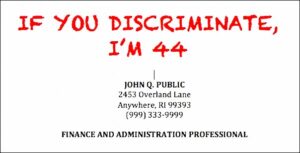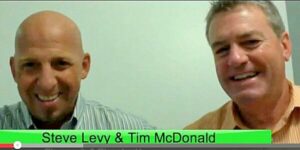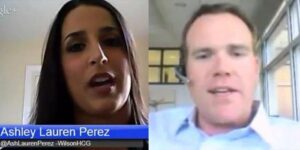Developing A Workplace Diversity Initiative
Merriam-Webster defines diversity as: the condition of having or being composed of differing elements and verity, especially the inclusion of different types of people (as people of
Merriam-Webster defines diversity as: the condition of having or being composed of differing elements and verity, especially the inclusion of different types of people (as people of
“If I could wave my magic wand, I’d set everybody free.” —Neil Peart Call me Mr. Pixie. That image, now delightedly

One of the year’s best business books sparks insight into an often overlooked source of innovation

Teamwork gets a lot of buzz — but teams often fall short. What can we do to crack the collaboration code? This idea is winning fans

Age discrimination has no place at work — and yet it persists. Why? What should we do? The TalentCulture community speaks…

Do you want to lead others? Start by leaving behind age stereotypes that keep us all from getting ahead. Try these 5 steps

This week, #TChat offers 3 ways to play! We marry old school with new tech, and hopefully advance workplace culture and practices for everyone

Are employers unintentionally losing competitive steam by overlooking talent that lives at the margins? Could a more inclusive world of work boost innovation?

What can industry conferences teach us about how to overcome generational stereotypes in the workplace? The Recruiting Trends Social Summit reminded me this week that the TalentCulture community mantra is more than mere words. Together we ARE better…

What role does age really play in today’s workplace? One of our very own #TChat Ambassadors takes a tough look, and offers advice for young professionals…

Today’s workplace is no place for age-based stereotyping. And yet, negative stereotypes persist. How can we break free from these assumptions that threaten professional relationships and business performance?

Even today, negative stereotypes can cast a shadow over our professional lives. See what experts from a top recruiting outsourcing firm say about labels in the workforce – this week’s focus on #TChat…
Collaboration – sounds good in theory, but hard to achieve in practice. Understanding human nature can help us tap into the best of collaborative techniques in the workplace. That was our goal this week…
We see examples of poor teamwork all around us. What’s at stake when business professionals fail to collaborate effectively? And how can we get on the right track? That’s the theme for #TChat this week…
Innovation isn’t magic. It’s the result of a culture designed to encourage fearless pursuit of fresh ideas – and the willingness to embrace failure as part of the process. It comes from conscious effort to gather input from a diverse and dedicated workforce…
Where does innovation begin? What characteristics of workplace culture allow viable ideas to emerge, take root and grow? That’s the focus at TalentCulture forums this week…
And then there’s this: The term was used in a 1964 study of British youth by Jane Deverson. Deverson was asked by Woman’s Own magazine
The diversity perception is much different in practice. The reality is, we discriminate; we stink at giving folks a fair shake, especially when they’re not
#TChat Radio Show Recap for 8/31/11 with the @12Most folks!
There was a pretty fantastic Twitter conversation happening last week on #TChat; it was about diversity. Be sure to check out the preview on MonsterThinking
“You and I, we are pressed into these solitudes Color and culture, language and race Just variations on a theme Islands in a much larger
Originally posted by Joe Gerstandt on MonsterThinking Blog Intersections baby, its all about the intersections… The majority of the work that we do around diversity
How old are you? (Did I really just ask that question?) But seriously, do age differences in the workplace make a difference in your world – for better or worse?
Strategies for expanding your professional growth by cultivating diverse relationships…